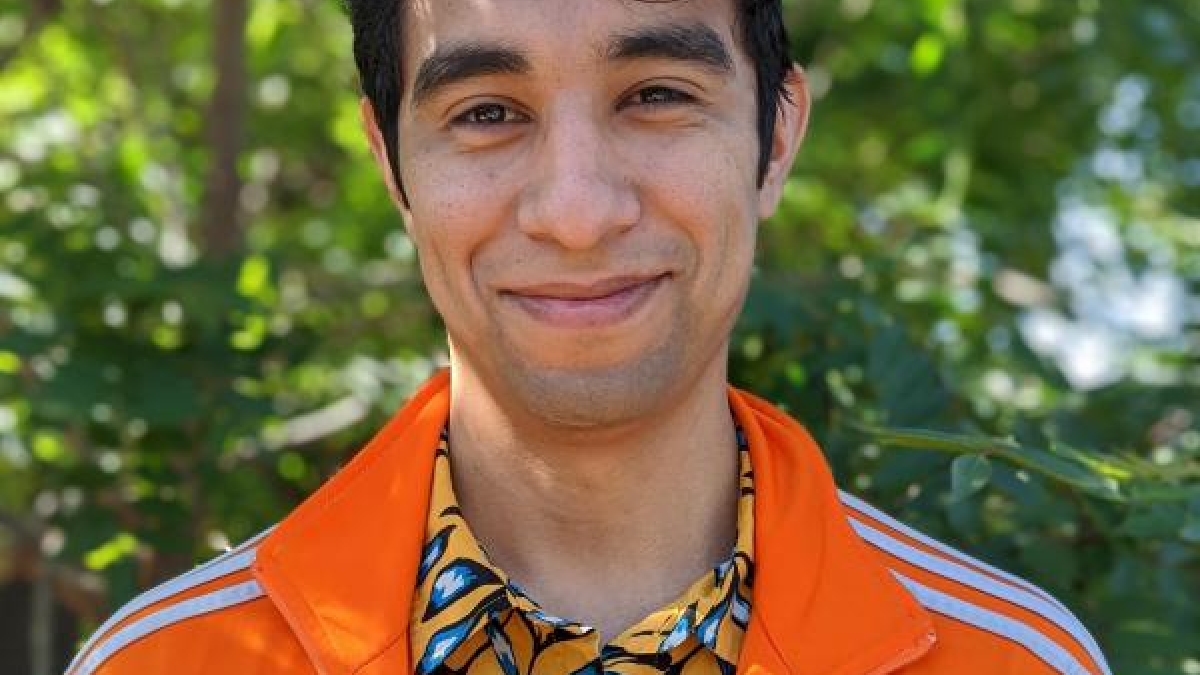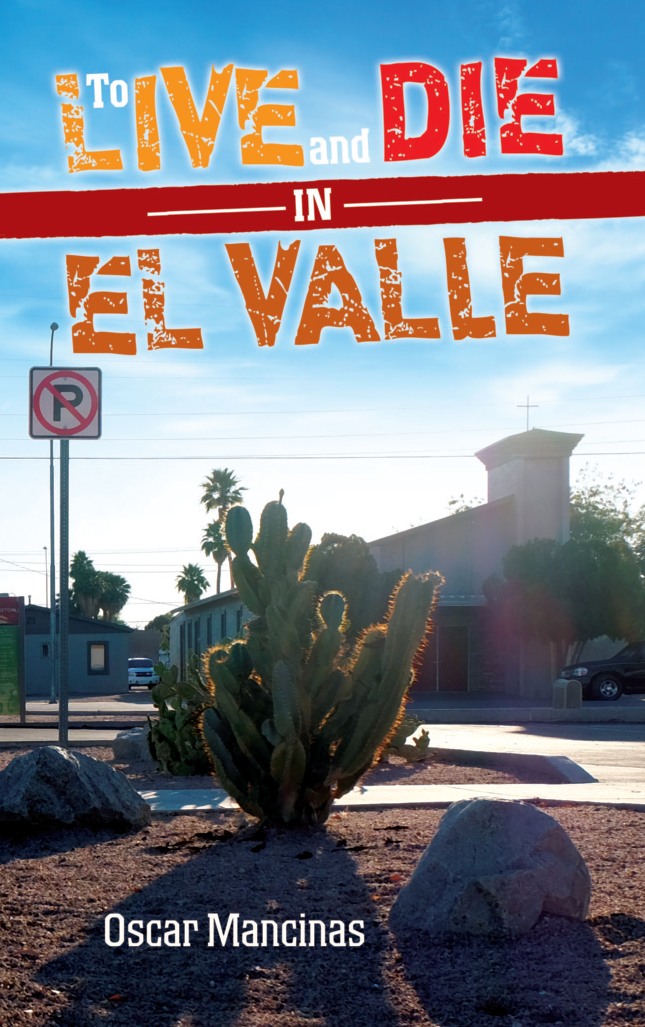ASU student wins award for book depicting working-class Latino community

Oscar Mancinas, a PhD student in the School of Transborder Studies, is a recipient of the 2022 Southwest Book Award from the Border Regional Library Association for his latest book, “To Live and Die in El Valle,” a collection of 13 fictional stories about the lives of working-class, Latino and Indigenous characters in Arizona.
Like many authors, Arizona State University student Oscar Mancinas first became a writer because he loved reading. As the son of Mexican migrants, he especially enjoyed the works of Latino and Indigenous authors, but he noticed that many of them weren’t reflective of his own background or community.
As Mancinas got older and discovered the works of Arizona authors like Ofelia Zepeda, Alberto Ríos, Refugio Savala, Stella Pope Duarte and Patricia Preciado Martin, he was inspired to add his own unique voice to the list of Arizona authors. This is how his latest book, “To Live and Die in El Valle,” a collection of 13 fictional stories about the lives of working-class, Latino and Indigenous characters in Arizona, came to be.
“The stories emerged from my desire to write the kind of short story collections I’d gravitated toward: collections about working-class, non-white people who must carve out their own communities amid racist and classist exclusion,” Mancinas said.
“I wanted to write short stories and poetry for the kinds of people I grew up with. I wanted to write short stories reflecting the kinds of struggles and celebrations specific to growing up working class, Indigenous, Latinx and within an Arizona city. I grew up enjoying fiction about characters coming of age or realizing their place in the world because I think I had some issues reconciling all that I found beautiful and important about my own culture and how unwanted or inconvenient my community and I were made to feel by the power structure surrounding us.”
The book, which was published in 2020, recently received the Southwest Book Award from the Border Regional Library Association, a nonprofit organization that promotes library service and librarianship in the transborder metroplex of El Paso-Juárez.
Mancinas is currently pursuing a PhD in transborder studies from The College of Liberal Arts and Sciences’ School of Transborder Studies. He shared more about what inspired “To Live and Die in El Valle” and what’s next for him.
Question: Tell us about yourself.
Answer: I was born and raised in Washington-Escobedo, near downtown Mesa, Arizona. After completing my master’s degree in Boston, I returned to Arizona to pursue a PhD in transborder studies because it felt like the perfect program for my interests as a writer and literary scholar, my love of history and the care I have for my community and others like it throughout Arizona. This is the place where many of my relatives have created homes — I'm hoping to do the same.
I have roots in Arizona dating at least as far back as the early 1940s, when my great-grandfather was contracted into the Bracero program and worked as a migrant farmworker in the Salt River Valley. … Since then, I've had family migrate back and forth between Arizona and Mexico. This was how my mom arrived in Mesa in the early 1980s. Within a few years in Washington-Escobedo, she met my dad, who had also been migrating between the U.S. and Mexico, working as a migrant laborer in a bunch of different jobs, both to survive economically and to help provide for our extended family. My paternal family is Indigenous Rarámuri, which means in addition to confronting the same kinds of economic and political precarity as other Mexican migrants, they've also had to fight structural anti-Indigenous racism.
Q: What did your process look like for writing and doing research for “To Live and Die in El Valle”?
A: Writing the book involved navigating and balancing multiple influences — from memories to history books, to other literary works of fiction, nonfiction and poetry. Even though the stories are set in a fictional city, I wanted them to feel grounded in a recognizable Arizona, an Arizona not too dissimilar from the real thing. In general, whether I’m writing fiction, scholarly essays or poetry, I tend to start with an idea or text and try to build out how this idea influences peoples’ actions or responses, especially in the face of longstanding oppression and structural exclusion.
As I wrote the book, I began to read more Arizona-based Latinx and Indigenous authors, and I tried to incorporate themes and imagery from their works into my own. In other words, I tried to add to our local literary traditions by including characters or cultural expressions which may not previously have been published by other Arizona authors.
Q: What do you hope readers take away from your book?
A: I hope readers feel a combination of excitement and challenge from my book. Especially for other Arizona natives, I hope the book gives them scenes and characters they recognize while also expanding their ideas for literary representation and storytelling. I hope more people will take up writing, publishing and literary criticism.
Part of my research includes questions about the literary infrastructure, or lack thereof, for Latinx and Indigenous authors in Arizona. It isn’t just authors who make literature possible. It’s also enthusiastic readers, book clubs, libraries, teachers, editors and critics. My work is possible because I found a community to help me create, so I want to encourage everyone to try to do the same.
Q: What’s next for you?
A: Next for me is working to finish my research and dissertation. Aside from that, I’m working on other writing projects. My next book will be a full-length collection of poetry that will be out later in 2022. I hope to keep writing and publishing across different genres, including more nonfiction writing.
To purchase or learn more about “To Live and Die in El Valle,” visit Arte Publico Press. Mancinas’ debut book, “Jaula,” a collection of poetry that explores borders of confinement, surveillance and invisibility, was also released in 2020.
More Arts, humanities and education

ASU professor's project helps students learn complex topics
One of Arizona State University’s top professors is using her signature research project to improve how college students learn…

Award-winning playwright shares her scriptwriting process with ASU students
Actions speak louder than words. That’s why award-winning playwright Y York is workshopping her latest play, "Becoming…

Exceeding great expectations in downtown Mesa
Anyone visiting downtown Mesa over the past couple of years has a lot to rave about: The bevy of restaurants, unique local shops…


